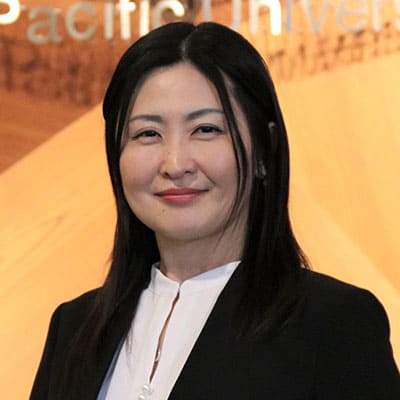Creating a New Inclusive Wave in University Language Education
Categories:
Overview
Use Universal Design for Learning (UDL) and challenge ourselves to create classes that considers the diversity of students in university education
Learners with a variety of characteristics, such as students with developmental disabilities or physical disabilities and students with health impairments/frailty, are studying in university classrooms. It is said that the university enrollment rate for students with disabilities is rising. At APU, where about half of the student body is international students, linguistic and cultural diversity are also factors to consider.
As an APU language faculty member, I wanted to offer better classes for each of those diverse students. It was this feeling that inspired me, the principal investigator, to start a practical research initiative that employed Universal Design for Learning (UDL).
UDL is a theory derived from the latest neuroscience and cognitive science on learning to consider designing classes where diverse learners can learn together. It aims to create an environment where it is easy for all students to learn, not just those requiring special support. In Japan, there are a variety of examples of practical research in elementary, junior, and senior high schools, but it cannot be said that much has been implemented in higher education, such as at universities.
Currently, I am implementing class improvements that apply UDL theory in the English language subjects that I teach. I am proceeding with development and verification of effectiveness for concrete methods, such as providing a selection of learning methods according to student characteristics and diversifying channels for communication with students. In the future I am aiming to accelerate my research by collaborating with elementary, junior, and senior high schools that have prior examples of implementation and with other universities that have begun trying things out.

Novelty/Originality
Forge a new path with practical research in linguistics using UDL, which has little precedent in university education
I have responded to a variety of student needs and requests as the Deputy Director for English Language Education at APU, and in so doing, I have experienced firsthand that the number of students with unofficial or undocumented issues is increasing. Additionally, during these meetings, I have keenly felt the importance of dialogue with individual students. It was from this feeling that I wanted to design better classes and to make my teaching more learner-centric, that I initiated this study.
I started learning about UDL and realized that, there were a lot of methods I had already put into practice. At the same time, in implementing things in accordance with the guidelines, I came to see that there were also more than a few cases where simply applying the theory as-is had not gone well. Since there is still not much in the way of linguistic practical research using UDL in university education, all the insights acquired through trial and error can be said to be novel and original.
The background of this study includes the wide range of practical research I have engaged to date. I have engaged in language education from a multifaceted perspective, including practical research on the nurturing of self-directed learners, initiatives in APU's pre-enrollment education, and even research on the effectiveness of overseas study. Additionally, I have also been actively involved in primary and secondary education, including advising on Oita Prefecture’s junior and senior high school English language education, class observations at the Super Science High Schools, and as a third-party evaluation committee member for prefectural educational institutions.
I have been applying my insights from that multifaceted experience and practical research, and taking advantage of the multilingual and multicultural environment that can be found at APU. I have been working to create classes where students with diverse backgrounds can learn from one another. I hope to expand the potential for UDL in university language education through this practice.

Related Research
Case Study on Inclusive Lessons for University English Classes based on UDL Theory Proceedings of the 4th Conference for the Association of Universal Design for English Language Learning (AUDELL), pp. 28-28 (Co-authored)
Principal Investigator

Ritsumeikan Asia Pacific University
You can view and print a summary of this page's contents in a single PDF page here.






As the Deputy Director of English, Student Affairs Committee Member, and member of the Advisory Committee for Students with Disabilities for many years in an environment rich with diversity known as APU, I have met students with all sorts of needs. Among them were students who couldn’t even recognize their problems themselves, and students who were unable to advocate for themselves. Just because I was able to assist one student with dyslexia didn't mean that the same support would work with the next one. Over and over again, there are things that make us painfully aware of our lack of capacity as teachers. These experiences made me strongly aware of the need not just for individual support, but for a more inclusive educational environment overall.
It's still ongoing trial and error, but I hope to search out new possibilities through the practice of UDL so spaces where students can each learn in their own way can be created.
Ritsumeikan Asia Pacific University Faculty Information
researchmap